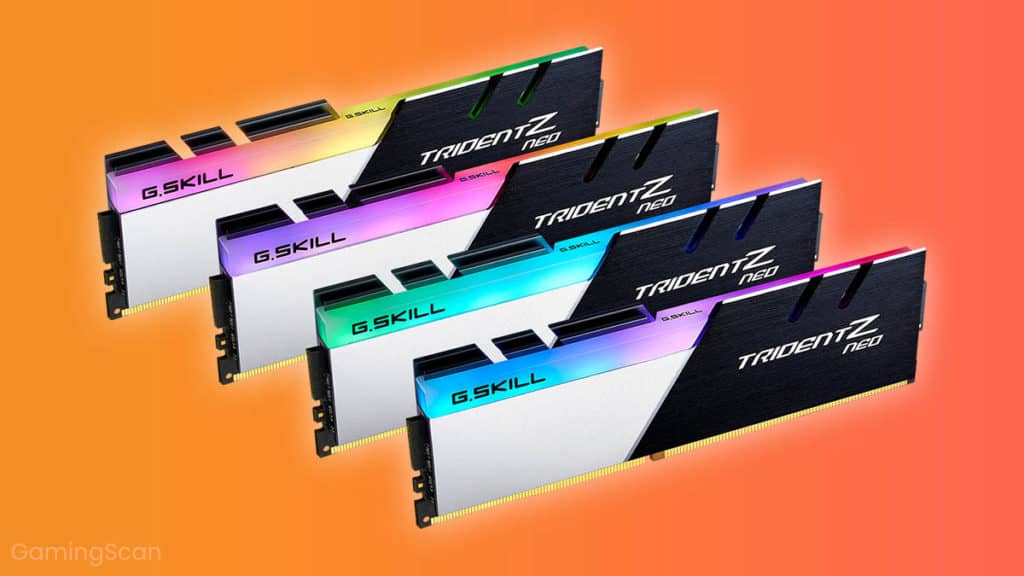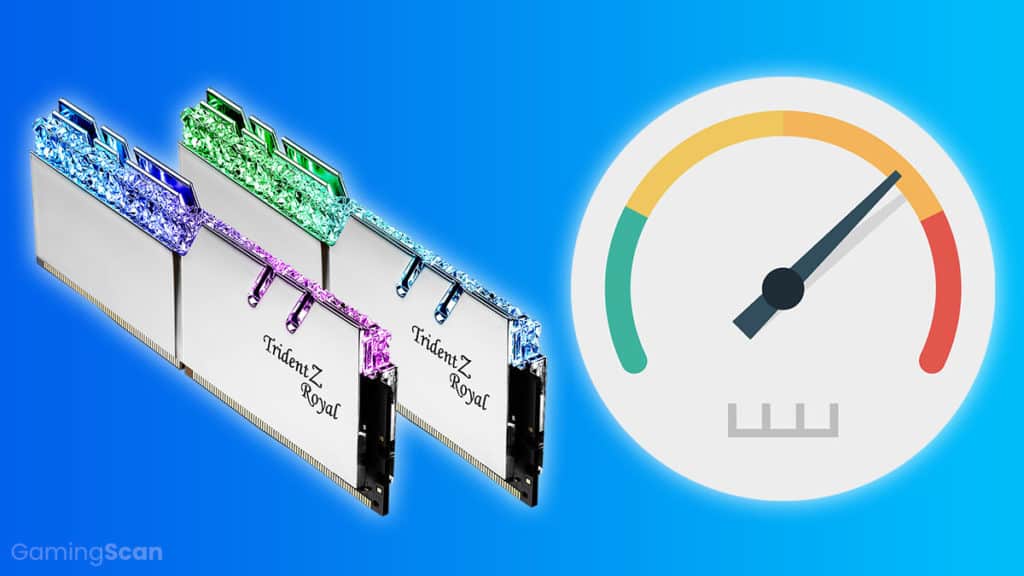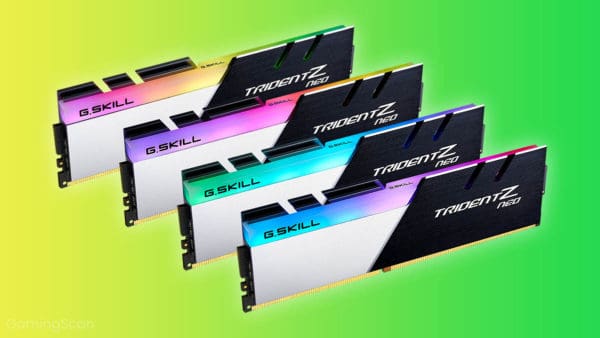Answer:
Random-Access Memory (RAM) is used for short-term storage of relatively small amounts of important data relevant to the functioning of computer programs, including the operating system itself.
RAM is much faster than SSDs or HDDs, but it is a type of volatile memory, meaning that it can only store data while it is powered.
When building a gaming PC (or any PC, for that matter), there are a number of different components to keep in mind, each of them vital for the proper functioning of the system as a whole. And one of those vital components is the RAM.
That said, in this article, we’ll be focusing on RAM—what is it? What does it do? What types of RAM are there? How much of it do you need in a gaming PC?
We’ll be answering all of those questions below, so if you’re interested in finding out more, read on with this guide!
Table of ContentsShow
What Is RAM?

Let’s start with the basics—what is RAM?
Well, the acronym stands for Random-Access Memory, and it is a type of memory used to temporarily store relatively small amounts of important information that the CPU or the GPU need to be able to access quickly so that all of the programs running on the computer would be able to function.
Moreover, RAM is a type of volatile memory, which means that it can only store data while it is powered. If the power supply is cut off, whatever data was loaded in the RAM is instantly lost.
As such, it’s clear as to why RAM is not used for long-term storage and that its advantage lies in its speed, which far exceeds those offered even by the fastest SSDs currently on the market.
In essence, we could say that RAM is your computer’s short-term memory, while the HDD or the SSD would be the long-term memory.
What Types Of RAM Are There?

Like any other technology, RAM has developed and advanced significantly over the years. The origins of RAM actually go all the way back to the 1960s and the first SRAM (static random-access memory) chips. It was developed and utilized along with DRAM (dynamic random-access memory) for almost half a century since then.
In the early 1990s, however, we see the first SDRAM chips, which stands synchronous dynamic random-access memory. And then, in June 1998, Samsung released the very first DDR SDRAM chip, where DDR stands for “double data rate.”
It is from here that DDR went on to dominate the market. In 2001, Samsung released DDR2, and DDR3 followed soon after, in 2003. However, DDR4 wouldn’t be released until 2011, but it is the dominant type of RAM today. Now, DDR5 is just around the corner, although it will be a while yet before it replaces DDR4 in the mainstream market.
It’s also worth noting that another type of memory was released soon after SDRAM, and that would be SGRAM—synchronous graphics random-access memory. And alongside the first DDR chips, Samsung also developed the very first GDDR chip, and as you might guess, the “G” in the acronym here stands for “graphics.”
Much like “regular” DDR, GDDR has advanced over the years, from the first GDDR chips to the much faster GDDR6 that you can see implemented in the latest mainstream graphics cards.
However, GDDR isn’t the only type of graphics memory that you’ll see implemented in modern graphics cards. In 2013, SK Hynix introduced the very first HBM (High Bandwidth Memory) chips, followed in 2016 by HBM2 chips that were since implemented in a number of graphics cards.
However, due to high manufacturing costs and the limited benefits that high bandwidth offered in terms of in-game performance, HBM2 never really posed a challenge to GDDR in the mainstream market, although it can offer significant benefits in workstations that run memory-intensive software.
All in all, the current state of the RAM market isn’t anywhere near as complicated as you might think from looking at all the acronyms mentioned here. The vast majority of PCs today use DDR4, and it won’t be eclipsed by DDR5 for a while yet. Meanwhile, the vast majority of graphics cards use GDDR—GDDR5 was dominant up until a few years ago, and it has now been succeeded by GDDR6.
How Much RAM Do You Need?

When building a PC, one of the common questions that are often asked is: just how much RAM is enough?
If we’re talking about a gaming PC, the general consensus is that 16 GB is the sweet spot at the moment. It is more than enough to run the latest games and it is fairly future-proof, too. For those who are on a tight budget, 8 GB of RAM will still suffice, although it’s not exactly the most future-proof option.
That said, there is no need to spend extra on higher-capacity RAM sticks unless you intend on using the PC with some memory-intensive professional software that could actually take advantage of all that extra memory.
On the other end of the spectrum, if we’re talking PCs that would only be used for the bare basics, i.e., internet browsing or viewing multimedia content, even 4 GB can be enough to cover the PC’s memory requirements. Needless to say, though, having more RAM can always help with multitasking.
How Fast Should Your RAM Be?

While the memory capacity is definitely the most important factor to keep in mind when buying RAM, speed can’t be overlooked either.
When it comes to RAM, the speed is expressed in Hertz, much like the clock speed of a CPU or GPU. The higher the clock speed, the higher the data transfer rates supported by the RAM module. Today, you’ll encounter DDR4 RAM modules with clock speeds that range anywhere from 2133 MHz to a whopping 5100 MHz, but most mainstream DDR4 sticks are confined to the 2133-3600 MHz range.
Now, the real question is: how much does RAM speed affect gaming performance?
The truth is: not that much. Yes, there is definitely a difference, and though it might be a bit more noticeable in some games that use a lot of memory, it mostly comes down to a handful of frames. Truth be told, the difference in performance can only really be noticeable if we’re talking about triple-digit framerates and monitors with high refresh rates.
So, all in all, if you’re concerned about gaming performance, it’s always a better idea to put more money towards a more powerful GPU rather than overclocked RAM.
Conclusion
And so, that would be about it for this article! Hopefully, you’ve found it helpful and it has shed some light on any misconceptions you might have had about the role that RAM plays in a PC.
If you’re building a new gaming PC at the moment, be sure to check out some of our gaming PC builds, as you’re bound to find one that fits your needs and your budget!




